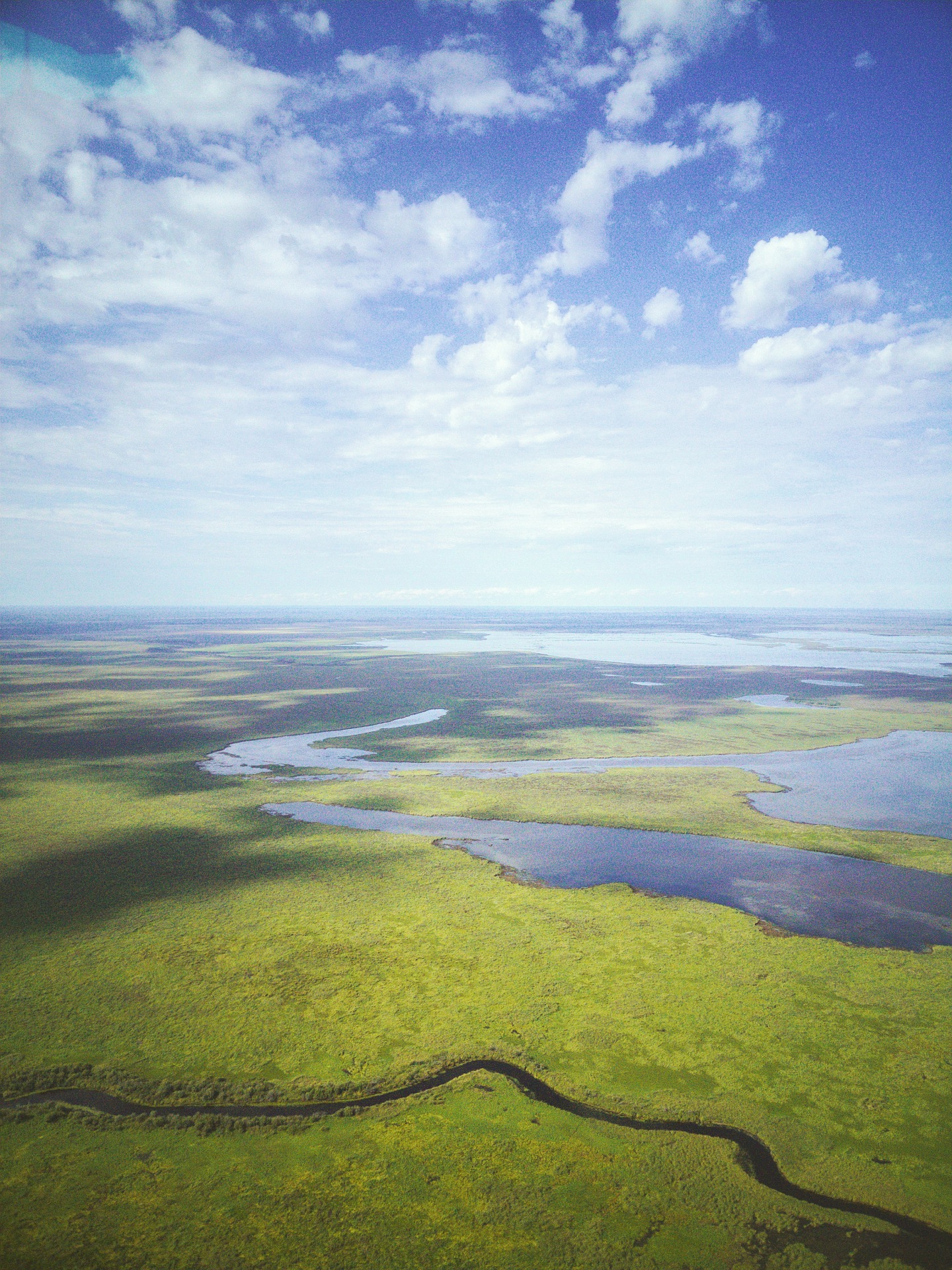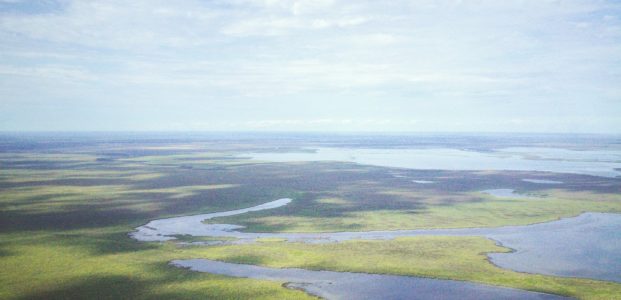Where regulatory frameworks fail to adequately protect the environment, litigation often ensues. This can be seen in real time in Northern Saskatchewan right now as three First Nations are engaged in complex lawsuits against the Government of Saskatchewan and SaskPower over the impacts of controversial hydroelectric projects on their Treaty rights and reserve lands.
Peter Ballantyne Cree Nation’s litigation against Saskatchewan and SaskPower
Last fall, the Peter Ballantyne Cree Nation (PBCN) received a positive decision from the Saskatchewan Court of Appeal in their long-standing lawsuit regarding the construction of the Whitesand Dam, as well as the subsequent flooded territory near Reindeer Lake in Northern Saskatchewan. The First Nation has been involved in litigation against the provincial government and SaskPower since 2004 when this lawsuit was first filed.
History and Background
In 2004 the PBCN filed their first statement of claim to commence this lawsuit, and they later filed an amended statement of claim in 2013 to clarify their legal position. They sued the provincial government and SaskPower for breaches of fiduciary duty and the honour of the Crown, as well as trespass on their land from flooding. This led to a first summary judgment decision came in 2014 where all claims made by PBCN were dismissed. Justice Smith of the Court of Queen’s Bench wrote that PBCN’s claims to damages were out of time, including their claims for trespass on their lands. PBCN appealed this decision to the Court of Appeal, which ultimately upheld all of the first summary judgement decision except for the dismissal of their claim that flooding from the dam amounts to a continuing trespass on their land. Both PBCN and SaskPower applied for a rehearing, both of which were dismissed.[/note]Peter Ballantyne Cree Nation v Canada (Attorney General), 2017 SKCA 5[/note] What remained outstanding in this lengthy and technical litigation was the question of whether PBCN’s trespass claim could continue and succeed at trial. However, Saskatchewan and SaskPower also tried to argue in more recent litigation that the land at Southend was not technically reserve land and it was instead transferred to Saskatchewan in 1930 pursuant to section 10 of the Natural Resources Transfer Agreement (NRTA). These issues resulted in a second chambers decision from the Court of Queen’s Bench in 2019, in which the First Nation’s trespass claim was again rejected. It would be relevant to delve into this issue as it remains the ongoing focal point of discussion. The answer to this question of who owns the flooded land is pivotal as the Whitesand Dam controls the Reindeer River’s flow into the nearby Island Falls hydroelectric power station.
Since the First Nation claimed that the flooding from the dam led to a trespass by the provincial government and by SaskPower on their reserve, whether or not it is indeed their land to protect is key to their potential success in this litigation. PBCN argued that the dam was built on traditional lands which were intended for hunting, fishing, and trapping. It was taken for granted in earlier stages of this litigation that the 600 flooded acres of land near the community of Southend constituted reserve land set aside for PBCN pursuant to the NRTA. Justice Konkin, writing for the Saskatchewan Court of Queen’s Bench in 2019, accepted the defendant’s claim that the land was not reserved for PBCN, finding that the selection and the surveying of the land was insufficient and these lands were excluded from the transfer of lands to the province on October 1st, 1930. Justice Konkin therefore dismissed PBCN’s claim for continuing trespass and did not find they were entitled to damages for the flooding.
The Chief of the CHCN has asserted that the hydroelectric dam has choked the water and is hurting both the people and animal species that rely on the Saskatchewan River Delta for food and survival. Further, the river is the largest freshwater inland delta in North America which provides a home for a vast array of species including plants, birds, and mammals.
Current Litigation Status
The First Nation and Canada appealed the 2019 Court of Queen’s Bench decision to the Saskatchewan Court of Appeal, which overturned it in late 2021. This court found that Justice Konkin erred in his conclusion that PBCN could not sustain a claim in trespass because Southend was not a reserve and he also erred when he held that the provincial government and SaskPower could rely on a 1939 letter from the federal government regarding the dam as a defence to PBCN’s claims. In the Court of Appeal’s momentous decision, the summary judgement decision in favour of the provincial government and SaskPower was set aside and the matter was remitted to the Court of Queen’s Bench. Thanks to the signing of Treaty 6 and a federal court order dated 1981, the case will be allowed to continue and PBCN hopes for further success in this litigation. However, PBCN is not the only First Nation to take such steps in an effort to defend their rights against the impacts of hydro projects in Northern Saskatchewan.
Cumberland House Cree Nation and Opaskwayak Cree Nation’s litigation against Saskatchewan, SaskPower, and the Water Security Agency
In late 2021, the Court of Queen’s Bench heard on an application for judicial review made by the Cumberland House Cree Nation (CHCN) and the Opaskwayak Cree Nation (OCN). While the court’s final decision has not been made public yet, some of the issues at play in this case can be seen in an earlier procedural decision that was issued last summer. The application concerns the decision made by the Water Security Agency (WSA) to allow SaskPower’s application to re-licence the E.B. Campbell Hydroelectric Facility and the Nipawin Hydroelectric Facility (NHF) on the Saskatchewan River. Amongst other determinations, the two First Nations applied for orders invalidating the licensing decision, as well as declarations stating that the Crown’s duty to consult and accommodate them has not been adequately fulfilled. In the decision issued last summer, SaskPower and the WSA applied to strike all affidavits in support of the First Nations’ applications. The ultimate question of whether the Crown’s duty to consult and accommodate was fulfilled will be addressed in the court’s next decision, which remains under reserve.
The Chief of the CHCN has asserted that the hydroelectric dam has choked the water and is hurting both the people and animal species that rely on the Saskatchewan River Delta for food and survival. Further, the river is the largest freshwater inland delta in North America which provides a home for a vast array of species including plants, birds, and mammals. Such concerns relay the importance of the Crown’s duty to consult and accommodate, yet only time shall tell how the courts will determine the issue.
In October of 2021, before the application for judicial review was determined, CHCN called upon the Saskatchewan Premier to accept an invitation to meet and find solutions to a water access crisis in the community. The Chief hopes to see more direct consultations with the province to address Indigenous sovereignty over the area. Although SaskPower has been in communications with the First Nations, there appears to be an impasse as to Indigenous rights and the scope of the Crown’s duty to consult and to accommodate.
Looking Ahead
While the final outcomes from these complex lawsuits await to be seen, they reflect a larger trend of First Nations turning to the courts to defend their territories and rights from the impacts of hydroelectric developments, as seen in other provinces as well. Hopefully these lawsuits help clarify a path toward more collaborative and consensual governance of hydroelectric projects in Saskatchewan going forward.


